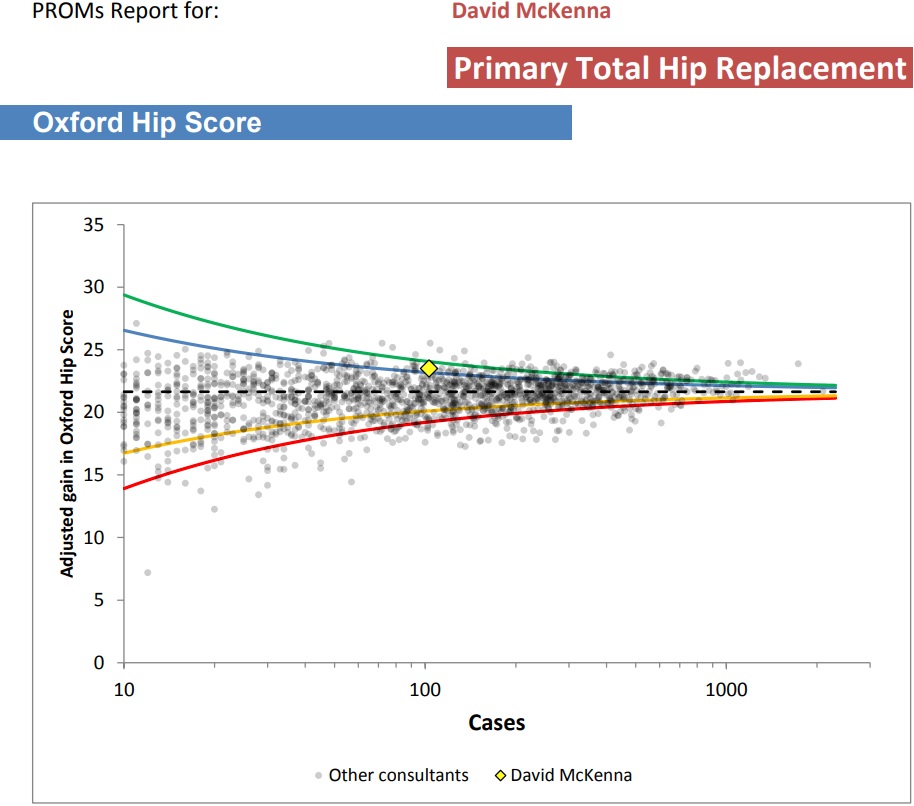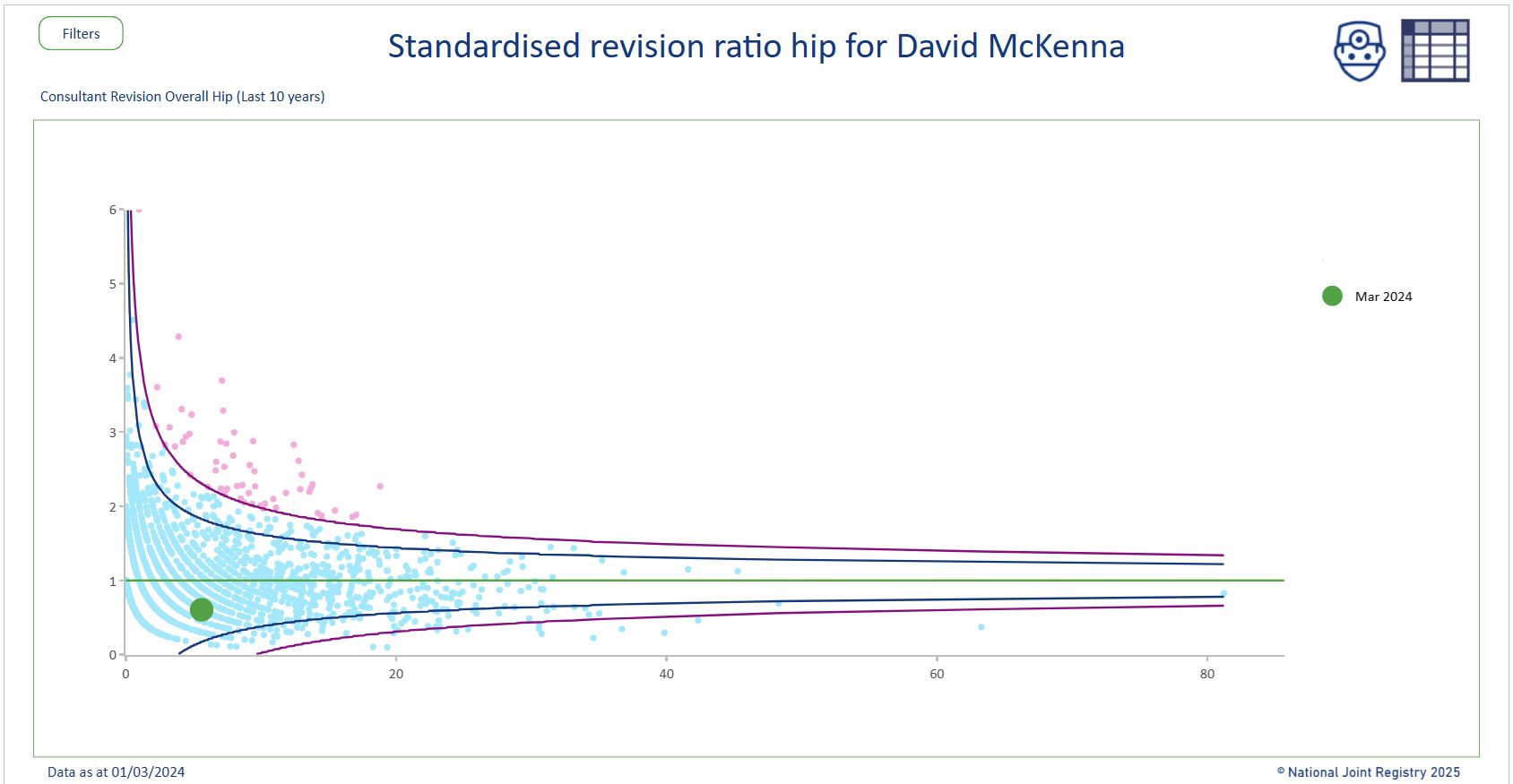Hip replacement surgery is a treatment for end-stage arthritis of the hip. This can be the result of wear and tear (osteoarthritis), congenital deformity (shallow socket) or inflammatory arthritis. Hip replacement is one of the most successful and cost-effective operations of all time when measured in QALYS (quality adjusted life years). The surgery takes around one hour, and most patients leave hospital two days after surgery.
Mr McKenna uses the Posterior Approach to the hip. The Posterior Approach has a significantly overall lower complication rate than the anterior approach. The dislocation rate for posterior and anterior approaches is the same.
The incision for a posterior approach is 10-12cm in a slim patient, but will be bigger in an obese patient. Mr McKenna does not do minimally invasive approaches because they have higher complication rates, the difference in patient outcome scores at 6 months is zero and the only benefit is a shorter stay in hospital by one day.
The Exeter System by Stryker
Mr McKenna uses the Exeter System from Stryker for the vast majority of his hip replacements. The Exeter hip is the stem that all other hips are measured against. It has a 15A* rating from ODEP. The Exeter stem has a reported survival of 99% at 22 years.
Mr McKenna uses this in combination with a Trident Socket from Stryker (also 15A* ODEP rated). Younger patients may be offered an uncemented stem Accolade II from Stryker (7A ODEP rated) which is newer to the market, but shortens the operation compared to a cemented stem. Shorter operations should in theory reduce recovery times.
PROMS report
David McKenna’s PROMS (Patient Reported Outcome Measure) and revision rate data for total hip replacement is shown in the graphs. This data is collected independently of the surgeon by the National Joint Registry. All Hip & Knee surgeons have access to their own data, very few publish their results.
First graph: PROMS (click to enlarge). Every hip surgeon in the UK is represented by a dot. The dots to the right of the chart are surgeons performing higher volumes of operations. The dashed line is the average improvement reported by their patients. Surgeons placed above the dashed line are achieving better outcomes than those below the line. Surgeons above the blue line are achieving the top 2.5% of outcomes. Surgeons below the red line are outlier surgeons producing poor results. Mr McKenna's outcomes are represented by the yellow dot.
Second graph: Standardised Revision Rates (click to enlarge). All UK hip surgeons are represented by a dot. Mr Mckenna is the green dot shown. The green line is the average number of revisions. Those surgeons below the green line have a better than average revision rate - their joint replacements are lasting longer before needing revision. Surgeons above the upper red curve are "Outlier" surgeons whose revision rates are so bad they are of concern.


